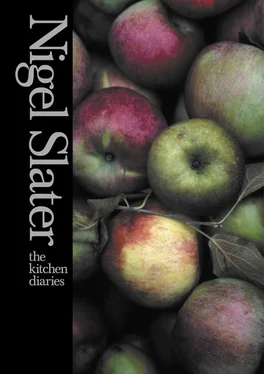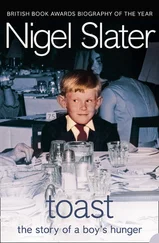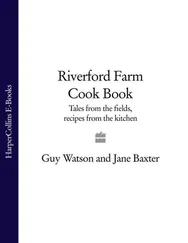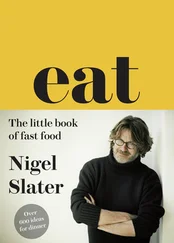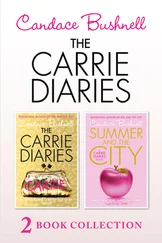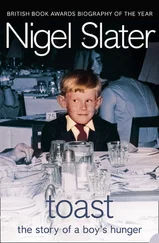That said, this is not a book whose dates are to be followed like a mantra. It is simply a book of suggestions for when you might, should you care to look, find gooseberries, sprouts, damsons etc. at their best. It is a guide to what is and isn’t worth eating and when. And I like to think that there are few things more worth knowing than that. It is not some tyrannical culinary calendar but a book to dip in and out of throughout the year and the years to come, a reminder to keep an eye out for something, a gentle – and, I hope, delicious – aide-mémoire.
The photography has been done in ‘real time’. So when it says October 2nd or April 9th, then that is when the picture was shot. After I have cooked each meal and it has been photographed, we sit down and eat it while it is still hot. Then I wash up. The pictures are taken at home, so if you recognise plates and pans from my books Real Food or Appetite, then that is because they are things that I have come to love and cherish. Whether it’s a vegetable peeler or a palette knife, it works for me and has become part of my life.
For the most part I shop at small local shops, farmers’ markets, proper butcher’s, fishmonger’s, delicatessens and cheese shops rather than all at once on a weekly trip to a supermarket. I have honestly never set foot inside a branch of Tesco. This book is very much a gentle plea to buy something, however small, each day, to take time to shop, to treat it as a pleasure rather than a chore. This doesn’t mean I spend my life shopping, far from it. It simply means that I stock up on dry goods, such as rice, pasta and the like, once a week, then manage to find half an hour a day (sometimes less) to buy just one or two fresh things from someone who sells them with a passion and a specialist interest – easier than ever now that shops tend to stay open later.
A weekly trip to the farmers’ market forms the backbone of my fresh food shopping, plus I have a weekly ‘organic box’ delivered to my door. I love to see those tables laid out under striped awnings with food that is being sold by the people who made or picked it. Shopping at the farmers’ market means that you can buy your cream from the person who churned it, your potatoes directly from the people who dug them from the ground, your salad leaves from the guy who planted the seeds. Food with a story you can follow from seed packet to table, picked that day. This, to me, is as good as food shopping gets.
I feel that buying ingredients as fresh, as honest as this is a chance to cook them as simply as possible, to let the food taste of itself, to allow it to be what it is.
My kitchen is not large, but a trio of skylights and the fact that the doors open up to the garden make it a hugely pleasurable place in which to cook. It has no fancy cookers, no batterie of expensive equipment, yet it has been thoughtfully and intelligently designed. The space works perfectly. Good kitchens are not about size, they are about ergonomics and light.
My garden is a tiny urban space, yet it has been crucial to this book. Leading down from the kitchen doors are steps on which rest pots of thyme and single marigolds, dark red pelargoniums and Italian aubergines. There is an old stone terrace where we eat in summer round a zinc-topped table set under a fig tree. The terrace makes way for a small, rather amateurish potager, with six little beds filled to overflowing. Two for pot-herbs, roses and old-fashioned scented pinks, one each for raspberries and currants, another for tomatoes and courgettes and one for runner beans, broad beans, artichokes and rhubarb. In amongst the chaos grow sweet peas, dahlias, nasturtiums and opium poppies.
Beyond that is a miniscule wooded patch, no deeper than twelve feet, with a tangle of plum, damson, hazelnut and quince trees, plus wood strawberries and, in winter, snowdrops growing underfoot. What I should emphasise is just how small this garden is. So when I refer to the ‘kitchen garden’, I am talking about a diminutive patch probably about the same size as the average allotment. I make no attempt to be self-sufficient, I simply haven’t the space. It is just that by growing something myself, from seed or a small plant, I feel closer to understanding how and when a pear, a medlar, a broad bean or a raspberry is at its best.
Anyone who has ever grown anything for themselves, or simply has an old apple tree in the garden, will know that you often end up with a glut – too much of the same ingredient at the same time. I was keen to reflect this in The Kitchen Diaries, so there are months where there may be a bounty of tomato recipes, others where almost every week seems to feature raspberries in some form or another. If you make the most of the good prices that go hand in hand with a glut at the market, or you want to use every bit of the ripe fruit and vegetables in your garden, then you will welcome this. Personally, I think of it as something of a glorious seasonal feast.
Roast rhubarb on a January morning; ‘pick-your-own’ strawberries in June; a piece of chicken on the grill on an August evening; a pot-roast pigeon on a damp October afternoon; a pork feast in November. This is more than just something to eat, it is food to be celebrated, food that is somehow in tune with the rhythm of nature. Quite simply, the right food at the right time.
Dal and pumpkin soup Dal and pumpkin soup a small onion garlic – 2 cloves ginger – a walnut-sized knob split red lentils – 225g ground turmeric – a teaspoon ground chilli – a teaspoon pumpkin – 250g coriander – a small bunch, roughly chopped For the onion topping: onions – 2 medium groundnut oil – 2 tablespoons chillies – 2 small hot ones garlic – 2 cloves Peel the onion and chop it roughly. Peel and crush the garlic and put it with the onion into a medium-sized, heavy-based saucepan. Peel the ginger, cut it into thin shreds and stir that in too. Add the lentils and pour in one and a half litres of water. Bring to the boil, then turn the heat down to an enthusiastic simmer. Stir in the ground turmeric and chilli, season and leave to simmer, covered, for twenty minutes. While the soup is cooking, bring a medium-sized pan of water to the boil. Peel the pumpkin and scoop out the seeds and fibre, then cut the flesh into fat chunks. Boil the pumpkin pieces for ten minutes, until they are tender enough to take a skewer without much pressure. Drain them and set them aside. To make the onion topping, peel the onions and cut them into thin rings. Cook them in the oil in a shallow pan until they start to colour. Cut the chillies in half, scrape out the seeds and slice the flesh finely. Peel and finely slice the garlic and add it with the chillies to the onions. Continue cooking until the onions are a deep golden brown. Set aside. Remove the lid from the lentils and turn up the heat, boiling hard for five minutes. Remove the pan from the heat, then add the drained pumpkin. Put the soup through the blender (for safety, a little at a time) until smooth, then pour it into a bowl. Stir in the roughly chopped coriander and check the seasoning. I find this soup likes a more generous than usual amount of salt. Serve in deep bowls with a spoonful of the spiced onions on top. Makes 4 good-sized bowls
A salad of fennel, winter leaves and Parmesan A salad of fennel, winter leaves and Parmesan tarragon vinegar – 1 tablespoon Dijon mustard – a teaspoon an egg yolk olive oil – 100ml grated Parmesan – 3 tablespoons lemon juice – 2 teaspoons thick slices of white bread – 2 olive oil for frying the bread 1 medium fennel bulb small, hot salad leaves such as rocket and watercress – 4 double handfuls a block of Parmesan for shaving Make the dressing by whisking the vinegar, mustard, egg yolk and olive oil together with a little salt and black pepper, then beating in the grated cheese. Squeeze in the lemon juice, stir and set aside for a few minutes. Cut the bread into small squares and fry in shallow oil till golden on all sides. Drain on kitchen paper. Slice the fennel finely; it should be almost fine enough to see through. Toss it with the salad leaves and the dressing. Pile the salad on to two plates, then shave pieces of Parmesan over with a vegetable peeler. I usually do at least eight per salad, depending on my dexterity with the peeler. Tip the hot croûtons over the salad and eat straight away whilst all is fresh and crunchy. Enough for 2
Читать дальше
